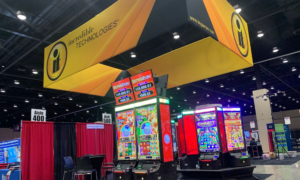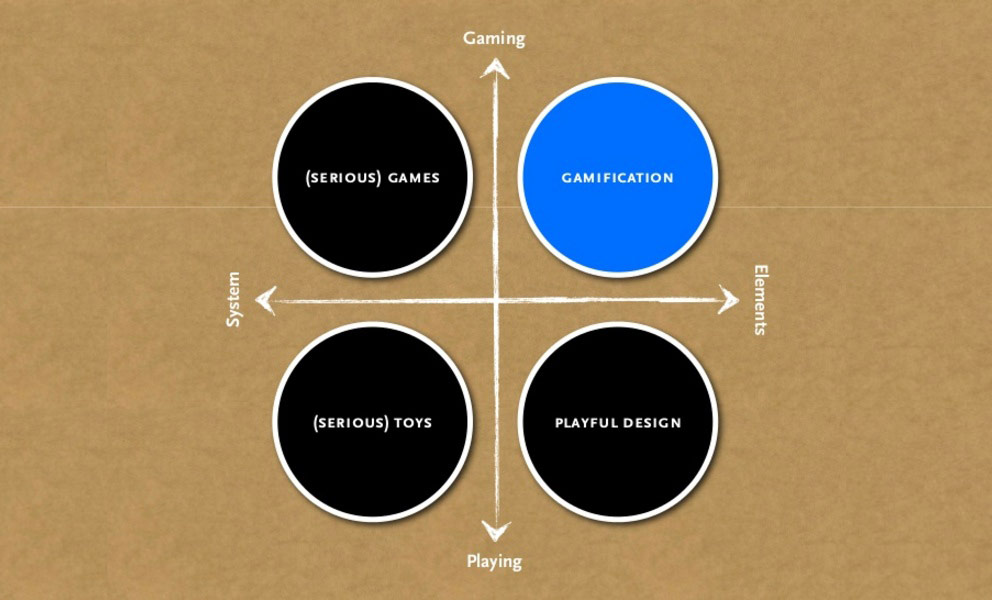Making a game out of lead generation: The whys and hows answered

1 . Introduction
We have all whiled away hours at video games in some form or the other. From furiously tapping eyeing a parent’s tiny keypad phone screen to setting up extensive play zones, our passion for gaming is no news. Branded games for exhibitions and trade shows have derived from exactly that indefatigable spirit that refuses to bow down in front of a challenge and is always curious to try some luck at winning.
Branded marketing games have become a pivotal cog in the marketing strategies of many companies, helping promote a specific product or service, or the brand or organization as a whole. The gamification of marketing in this precise, customised manner aids engagemnet with a target audience, enhances brand awareness and subsequently loyalty and ultimately drives conversions. Yu-kai Chou, the creator of the Octalysis Gamification Framework, refers to the incorporation of gamification into such focussed, productive activities, from marketing to the workplace, as laying stress on a ‘Human-Focused Design’ wherein what is prioritized is the experience of the people involved.
2. Elements of gamification
Gamification can be applied to various areas, including marketing, education, employee training, customer loyalty programs, health and wellness, etc.

Here is a list of the most basic gamification elements upon which engaging user experiences may be designed as needed:
- Points, badges, and virtual currency: These are fun and innovative ways to recognize the persistent efforts and achievements of users, build a sense of community and foster competition among participants.
- Rewards and incentives: Offering tangible or intangible rewards, such as special discounts, access to exclusive content or virtual goods, along with creating a tiered system helps motivate desired actions in the long run.
- Challenges and quests: Introducing tasks, missions, or quests that participants need to complete providing a sense of purpose, and progression and are equally effective for one-time engagement as well as enduring interaction rates.
- Social interaction and collaboration: Incorporating social elements, such as team-based challenges or sharing achievements with friends further boost engagement and create a sense of community. These may range from referral points to group activities such as Google Pay’s housebuilding to level up and collect rewards.
- Feedback and progress tracking: Providing immediate feedback, progress updates, and performance metrics gives participants a sense of improvement and helps them stay motivated. A site-wide leaderboard will nourish competition while a personal progress bar will propel individuals to engage more to ascend faster to the next level. Countdowns are another gamification element that drive action.
- Storytelling and narratives: Creating narratives or storylines that immerse participants in a fictional or thematic context, provide visual cues, enhance engagement and provide a compelling, immersive experience.
The goal of gamification is to leverage these elements to make activities more enjoyable, increase participation and motivation, and ultimately achieve specific objectives, such as driving sales, improving learning outcomes, increasing user engagement, or promoting behavior change.
3. Understanding branded marketing games
Variously known as advergames or branded entertainment games, marketing games are a fun and interactive medium for users to connect with your brand, and are infused with promotional content accordingly. These games can be online or application based, and may utilize Augmented Reality and Virtual Reality to further enhance the experience. Usually, their shot to widespread adoration is referring to popular culture elements, echoing already-existing video games with a readymade fan following and tapping into the competitive and nostalgic feelings of people.
The main characteristics of branded marketing games include:
- Brand Integration: The games prominently feature the brand elements or its products within the gameplay, storyline, or visuals.
- Contextual Relevance: The games are usually designed to align with the brand’s values, image, and target audience.
- Interactive Engagement: Advergames aim to provide an enjoyable and interactive experience to players, encouraging them to spend more time engaging with the brand and its messaging.
- Social Sharing: Branded marketing games often include social elements, such as score-sharing, leaderboards, and the ability to invite friends to play. This encourages players to share their gaming experiences with others, extending the game’s reach.
- Cross-platform Accessibility: Marketing games can be designed for various platforms, including web browsers, mobile devices, gaming consoles, and social media, allowing wider accessibility to the target audience.
- Data Collection: Marketers can use these games to collect valuable data about players’ preferences, behaviors, and interactions, which can be used for targeted advertising and future marketing strategies.
4. Benefits of branded games for exhibitions and trade shows
Trade fairs and exhibitions come to be highly competitive spaces, where multiple brands overlapping in their offerings are huddled together and vying for attention of the visitors. While the exhibition stall design can wow onlookers, they need something more to make them stay.

Branded marketing games can be valuable tools for exhibitors at trade shows and exhibitions for several reasons, as stated below:
- Increased Foot Traffic: Trade show booths that offer interactive and engaging advergames are likely to attract more visitors.
- Extended Engagement: Branded games encourage attendees to spend more time at the booth, allowing exhibitors to have more meaningful interactions with potential customers.
- Enhanced Brand Awareness: Advergames featuring the brand or its products reinforce brand recognition and awareness among attendees. As players interact with the brand within the game, the brand’s image and message are reinforced in their minds.
- Data Collection and Lead Generation: Branded marketing games can be designed to collect data from players, such as contact information and preferences. This data can be used for lead generation and follow-up marketing efforts after the event.
- Positive Association: When attendees have a positive and enjoyable experience playing the game, they are more likely to associate those positive feelings with the brand. This can create a favorable impression and increase brand favorability.
- Word-of-Mouth Marketing: Trade show attendees who have a great experience playing branded games are likely to share their positive experiences with others at the event.
- Product Demonstration: Marketing games can be designed to simulate product usage or showcase the brand’s offerings within the game environment, allowing attendees to experience the products in a virtual setting.
- Prizes and Incentives: Exhibitors can use these games as a platform for offering prizes, discounts, or other incentives to players who achieve certain milestones in the game and take steps towards inculcating brand loyalty.
5. How can you reap maximum benefits from branded games?
To maximize the benefits of using branded marketing games at trade shows, exhibitors should consider the following strategies:- Set Clear Objectives: Define specific goals for using the branded games at the trade show. Whether it’s increasing brand awareness, generating leads, showcasing products, or driving sales, having clear objectives will guide the design and implementation of the games.
- Relevance to Brand and Audience: Ensure that the games are directly related to the brand and its offerings. Tailor the games to appeal to the target audience attending the exhibition.
- Attractive Booth Design: Create an inviting and visually appealing booth to attract attendees. Use signage, banners, and displays that promote the branded games and related perks and encourage people to participate.
- Ease of Access: Do ensure that the instructions for playing are offered in a handy manner, and that the rules of the game aren’t complicated or needing substantial time to be explained to each individual.
- Interactive Setup: Make the game setup interactive and accessible. Use touchscreens, VR headsets, or motion-sensing technology to enhance the gaming experience.
- Engaging Gameplay: Design the games with engaging and entertaining gameplay. The more enjoyable the experience, the longer attendees will stay at the booth and even go for another round.
- Multi-player Setups: Games are a social activity, and are best enjoyed with friends. If your budget allows, going for multi-player games will account for greater hype.
- Gamification of Prizes and Incentives: Offer attractive prizes, discounts, or exclusive offers to players who achieve certain milestones or scores in the games.
- Data Collection and Lead Capture: Integrate a data collection mechanism within the game to capture attendee information. This data can be used for follow-up marketing and lead generation.
- Social Media Integration: Incorporate social media sharing features into the games, allowing players to share their experiences and scores with their networks. This can increase the game’s visibility and reach beyond the trade show at the moment.
- Staff Training: Train booth staff to promote the games effectively and engage with attendees during and after gameplay. Staff should be knowledgeable about the brand, products, and how the game aligns with the company’s marketing objectives.
- Monitor and Measure: Track the performance of the games during the trade show. Monitor metrics such as the number of players, time spent playing, lead conversions, and overall impact on brand awareness. This data will help assess the success of the campaign and ROI.
- Follow-Up Marketing: After the trade show, use the data collected from the games to follow up with leads and continue the conversation with potential customers. Personalize the communication to reference their engagement with the games.
- Long-Term Strategy: Consider the potential for using the branded marketing games beyond the trade show. If the games have proven effective, they could be repurposed for online marketing, social media campaigns, or other events.



